Everyone with a website, especially those who rely on it for business, should know how to back up a website.
Why? It’s not just for scary situations like hacking or crashes. Even something small, like a theme update, can mess things up. But if you have a backup, you can easily fix it! Just grab the saved copy and put everything back to how it was in minutes.
Feeling lost about website backups? Don’t sweat it! This guide will break down what backups are and how to create one for your website, even if you’re a beginner. Ready to set things right?
What is a Backup or a Web Backup?
A web backup is a compressed archive file containing all the data that makes up your website at a specific point in time. This includes your website’s code, content, images, and databases. Essentially, it’s a complete digital snapshot of your online presence, ready to be restored if needed.
Why Is It Important To Have A Backup
Backups are like superhero suits for your information. They create copies, whisking them away to a safe haven, ready to swoop in and rescue your precious files when disaster strikes. Whether it’s a clumsy coffee spill, a rogue virus, or a hardware meltdown, backups have your back (literally).
Here’s why backups are the only solution to data loss:
- Prevent heartbreak: Accidental deletions, corrupted files, and even natural disasters can’t touch your data when it’s safely backed up. Breathe easy knowing your memories, work, and essential documents are secure.
- Save time and money: Recovering lost data can be a costly, time-consuming ordeal. Backups act as a fast-forward button, getting you back on track in a flash. No need for expensive data recovery services or hours of frantic searching.
- Peace of mind: Knowing your data is safe is like a warm blanket on a stressful day. Backups banish anxiety and boost your confidence, letting you focus on what matters, not data drama.
So, ditch the data-disaster worries and embrace the backup superpower! Set up regular backups (cloud storage is your friend!) and rest assured, your information is always just a click away, safe and sound.
Note that backups aren’t just for superheroes. They’re for everyone who wants to keep their data safe and their sanity intact.
How Often Do I Have To Make A Backup?
It is very difficult to give you a periodicity; It really depends on the type of website you have and how often you update it.
To give you an idea, if you are building a blog, surely you are making new changes every day: you modify the template, add content, configure a plugin… In such a case, I would recommend that you, at least, have a daily backup.
If it is a corporate website or a blog that you do not update daily, you can make backup copies weekly, for example. Or, every time you include new content or update part of your website.
In other cases, for example, if you have an online store or a dropshipping business, we recommend that you take this task much more seriously. It’s your business and making sure you have recent backups of your site is one of the tasks that should be high on your to-do list.
At Upspeedhosting we take this very, very seriously. With the Premium Backup tool, all our clients have two daily and automatic backup copies of their content free of charge.
4 Reasons to Create a Backup or a Backup
- Security. We have just seen it in the previous section. In the event of any unexpected error on your website, having a backup allows you to go back in just a few minutes.
- Updates. To keep your application safe, it is necessary to make regular updates on both the site and the contents, plugins, or templates you use. But what if something goes wrong? Although it is not common, it is true that incompatibilities can arise when changing the version of WordPress or any of its plugins. One of the most common errors that can occur is the WordPress white screen or screen of death. The easiest way to get your website back to normal while you analyze which plugin is causing problems is to restore a backup.
- You have made changes and want to go back. There are times when we feel like trying out a new plugin, tinkering with the web code, or making changes that we think might work, but… What if something goes wrong? In this case, believe us that having a backup is the fastest solution to your problem.
- You are the victim of a hack. If a malicious user has taken over your site, restore your site as soon as possible so you don’t lose credibility with your visitors or customers. Otherwise, you run the risk that Google will index hacked content and penalize your position in search results.
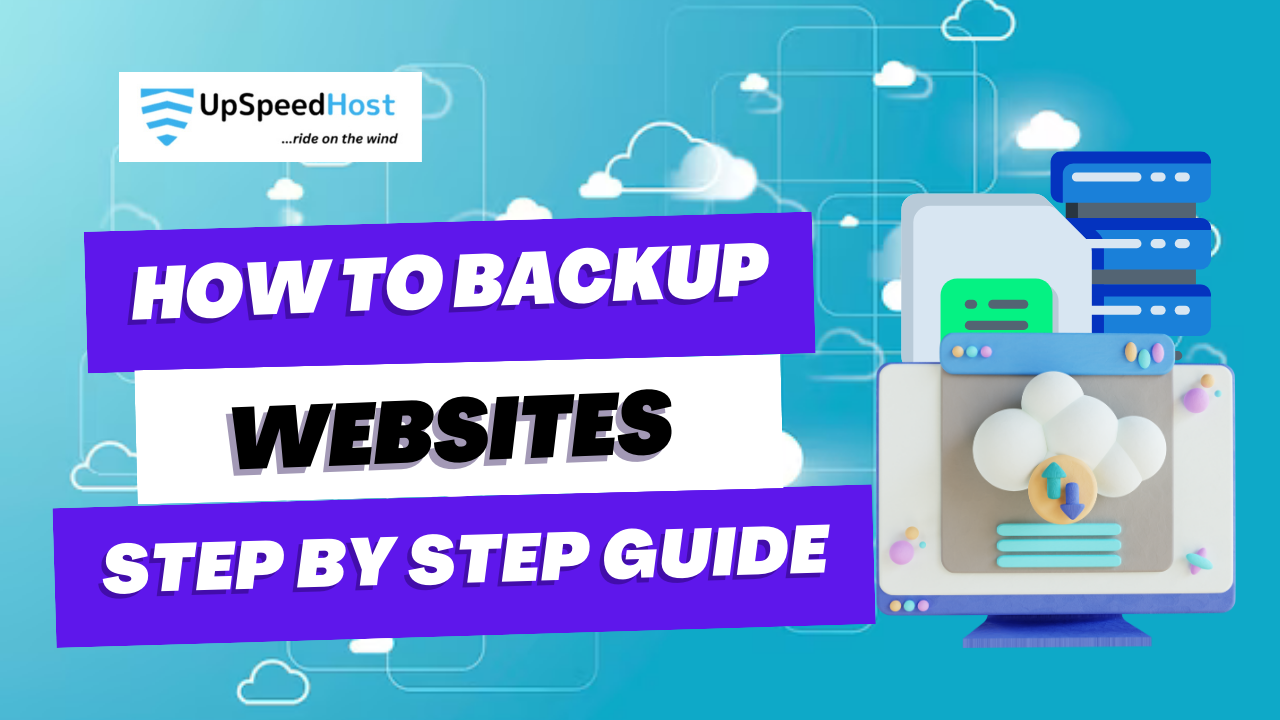
How To Backup A Website
After what we have just seen, it is clear that if you have a website, a blog, or e-commerce, you need to know how to make a backup.
I am going to give you these three options, you choose the one that seems most comfortable to you:
- CodeGuard Backup: it is a Upspeedhosting recommended backup tool and it automatically takes care of creating your backups. Yes, as you are reading it!
- cPanel backups: an alternative if you have your hosting with another provider or want to make copies of your website yourself, but here at Upspeedhosting we backup our client’s website daily.
- Backup plugins for WordPress: If you use this WordPress, you have some plugins that take care of making backup copies of your site.
Let’s look at each of these options in more detail.
1. Premium Backup (CodeGuard Backup)
If you have your hosting plan with us, then it’s a piece of cake.
All our web hosting plans include Premium Backup. This tool makes two backup copies a day of the content of your website and keeps copies for 2 days. So if something doesn’t go as expected, you can go back with one click.
This tool is available in your client area and, in addition to making backups, it allows you to restore any content on your website in just a couple of clicks; be it a database, an application, a specific domain, or an email account!
The operation is very simple. You really don’t have to make a backup, the tool does the backing up automatically. The only thing you need to know is how to do a restore in case you ever need it or download a local copy, which never hurts.
Here I briefly explain how it works:
First, Access your client area and go to the “Website Backup” or “CodeGuard” section. Next, select the hosting plan on which you want to consult and manage your backups.
Regardless matter what has to be recovered, restoring a backup version from CodeGuard is fairly straightforward.
- Navigate to your CodeGuard dashboard.
- Search for your domain in the list of website backups.
- Once you’ve found it, click the Action button on the right side of the domain name.
- Select restore.
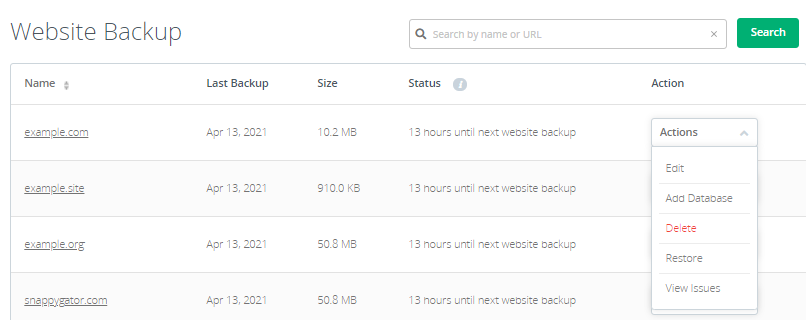
- Find the backup date you want to restore.
- Click the Restore Options option next to the backup date.
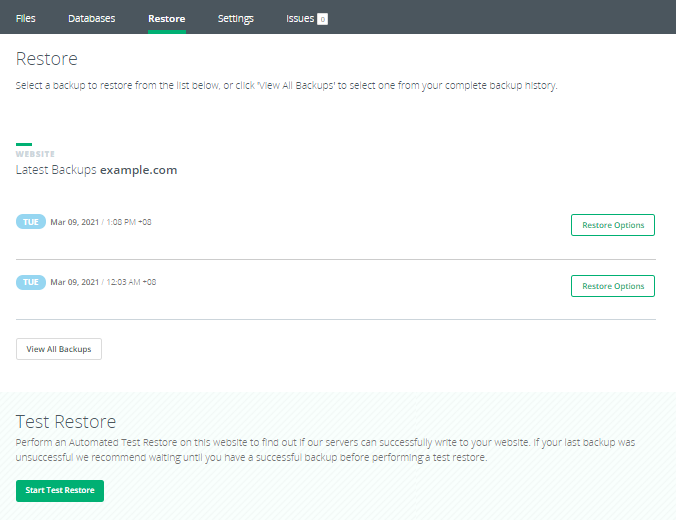
You can then choose from the available Restore Options.
2. How To Backup A Website From Cpanel
If you want to know how to make a backup copy of all your content, here I explain how to do it in just a few clicks from cPanel.
First, Access the control panel of your hosting. In the “Files” section locate the “Backups” function and click on it.
On this new screen, click on the “Download a Full Account Backup” button.

By default, cPanel shows the Home Directory option checked as the backup destination. Leave this option checked and enter an email to be able to send you a notification as soon as the backup is ready.

Download the backup of your website
Once the backup is complete, you will receive an email indicating that the process is complete. To download your backup, simply access the Backups section of cPanel again and you will see the file that has been generated.
Very important: We recommend you not to store the backup copies in your hosting. In addition to taking up space in your hosting plan and being able to affect its performance, it can be a risk if you lose your access passwords, there are several people who manage the service or, for example, if you inadvertently forget to renew your plan and is canceled.
Ideally, you should also store your backups on a hard drive or an external storage service like Dropbox or OneDrive.
3. Plugins To Make Backups In WordPress
In addition to backing up the content of your hosting plan, if you have a WordPress website you can also create backup copies from the application itself.
In the official WordPress repository, there are currently more than 58,000 plugins and as you might imagine, many of them allow us to make backup copies of our website in a couple of clicks.
Below we show you some of the most used plugins to make backups in WordPress.
It is one of the most installed backup plugins in the official WordPress repository.
One of the main advantages of this plugin is that, in addition to being able to make an entire copy of your website, you can schedule successive backups so you don’t have to make copies manually. In addition, they are automatically downloaded to the service that you choose (Drive, Dropbox…) or sent the backup directly to an email account that you choose.
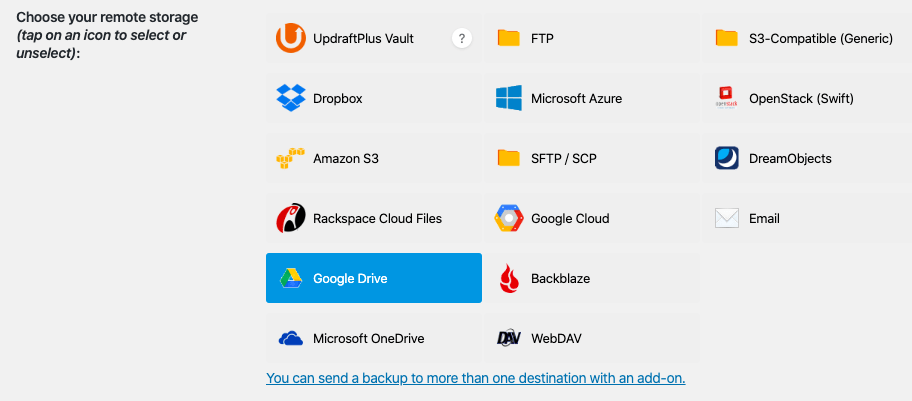

Unlike the previous plugin, in the free version of BackWPup, we won’t be able to send our backups automatically to external storage services, although we can schedule the backups depending on the frequency we want.
In any case, if you don’t want to schedule backups, you can always use this plugin to make backups manually and download them in the format you choose (zip, tar, tar.gz, tar.bz2…).
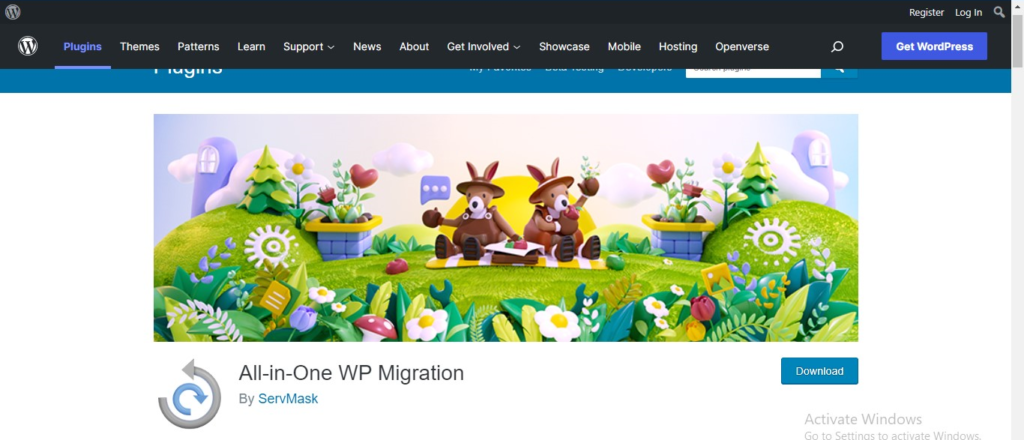
Although the main objective of this plugin is to migrate a web hosting, I did not want to leave it out, since the option to create a backup is very simple and impossible faster!
As you can see below, it presents a simple interface and you will be able to create your backup in less than the time it takes to cool your coffee. Although, since it is not a specific backup plugin, it does not have the functionality to schedule your backups.
Once you have the backup, go to the export option and select the destination of the backup you just created. that simple.
Final Thought
Let’s be honest: after diving into this article, you’re probably convinced of the need for website backups, and you’ve got a good handle on how to make them happen.
Remember those examples? A rogue update or a tweak gone wrong can render your site useless. But with a backup in your pocket, you’re just a few clicks away from hitting the “undo” button on disaster.
Premium Backup is the most convenient way to always have your backups at hand. In fact, it automatically takes care of all the backups itself and also gives you the option to perform any restoration in just a few clicks.
You can always make your copies yourself from cPanel or use a WordPress plugin that allows you to schedule backups and thus forget about performing this task manually.
Now tell me, how often do you make backup copies? What tools do you use to make backups?
I hope this article was useful!

